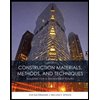
(a)
The heat flux for each radiator material.
Answer to Problem 4.11P
The heat flux for the brass radiator is
Explanation of Solution
Given:
The thickness of each radiator is
The temperature of engine fluid is
The ambient air temperature is
Formula used:
The expression heat flux of radiator is given by,
Here,
The temperature gradient is given by,
Here,
Substitute
Calculation:
The heat flux of aluminum radiator is calculated as,
Substitute
Here,
The heat flux of brass radiator is calculated as,
Substitute
Here,
Conclusion:
Therefore, the heat flux for the brass radiator is
(b)
The estimate of relative area and the relative weight of changing from brass radiator to an aluminum radiator.
Answer to Problem 4.11P
The relative area of aluminum is
Explanation of Solution
Given:
The heat transfer rate is the same for brass and aluminum.
The brass is
The density of brass is
Formula used:
The relation for rate of heat transfer in aluminum is given by,
Here,
The relation for rate of heat transfer in brass is given by,
Here,
The heat transfer rate is same for brass and aluminum.
Equate equation (IV) and (V) to obtain expression for
The expression for weight is given by,
Here,
Calculation:
The area of aluminum is calculated as,
Substitute
The wall of thickness of both the radiators is same.
Here,
The weight of brass is calculated as,
Substitute
Here,
The weight of aluminum is calculated as,
Substitute
Here,
Substitute
Divide equation (X) by (VIII).
Conclusion:
Therefore, the relative area of aluminum is
Want to see more full solutions like this?
Chapter 4 Solutions
Materials Science And Engineering Properties
- A 2.0-kg aluminum block is originally at 10 degrees celcius. If 36 kJ of energy are added to the block, what is its final temperature (in Kelvin)? The specific heat of aluminum is 900 J/kg K The answer (in fundamental SI unit) is?arrow_forwardA long steel I-beam used in bridge construction has a length of 15.0 m. The beam may be exposed to temperatures as low as −22°C in the winter and as high as 33°C in the summer. What is the difference in length of the beam between these two temperature extremes? (Give the absolute value of the difference. Enter your answer in mm.)arrow_forwardAn aluminum pipe has a length of 69 m at a temperature of 8°C. An adjacent steel pipe at the same temperature is 5 mm longer. At what temperature will the aluminum pipe be 15 mm longer than the steel pipe? Assume that the coefficient of thermal expansion for the aluminum is 22.5×10-6/°C and that the coefficient of thermal expansion for the steel is 12.5×10-6/°C.arrow_forward
 Materials Science And Engineering PropertiesCivil EngineeringISBN:9781111988609Author:Charles GilmorePublisher:Cengage Learning
Materials Science And Engineering PropertiesCivil EngineeringISBN:9781111988609Author:Charles GilmorePublisher:Cengage Learning
 Construction Materials, Methods and Techniques (M...Civil EngineeringISBN:9781305086272Author:William P. Spence, Eva KultermannPublisher:Cengage Learning
Construction Materials, Methods and Techniques (M...Civil EngineeringISBN:9781305086272Author:William P. Spence, Eva KultermannPublisher:Cengage Learning


